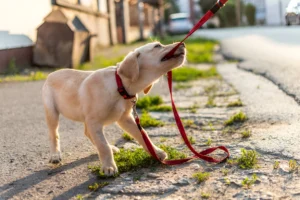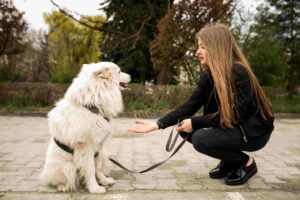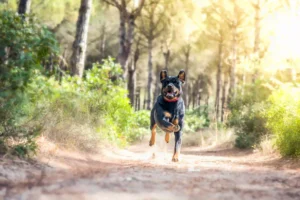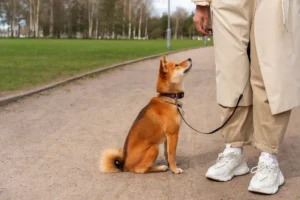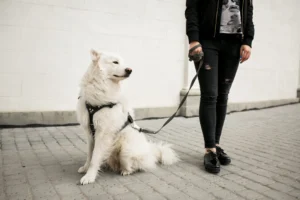How to Train a Dog to Walk on a Leash
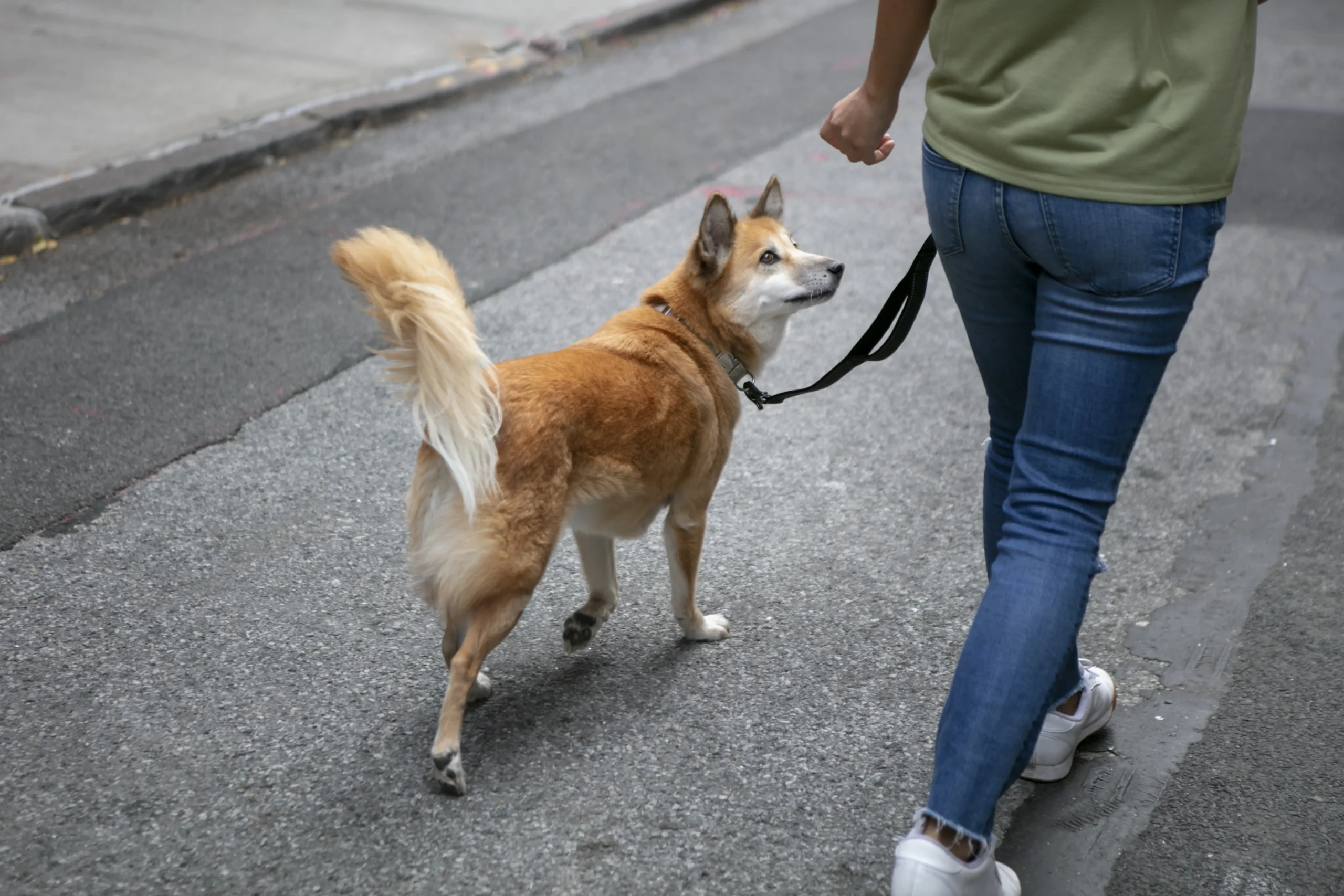
Many people believe that dogs are naturally fluent in the art of rope walking. However, training is required for this skill. Every time you take your dog for a walk, you’ll appreciate having taught them this valuable skill.
Pups can start learning how to walk on a leash as early as eight weeks old, which is an important skill. While some people pick up leashes training quickly, others take a little longer. In any case, you should continue to be steady, upbeat, and most importantly, patient. As a result in this guide, we will tell you how to train a dog to walk on a leash.
Contrary to popular belief, puppies do not naturally know how to walk beside their owners while wearing a leash. In actuality, a dog leash exercise may find it puzzling. They will require some time to get used to the constraints of a collar, harness, or dog leash before they can be expected to walk beside you peacefully and without yanking on the leash.
How to Train a Dog to Walk on a Leash
Patience is the key to training a mature, senior dog leash to walk. There are a lifetime of negative habits for your dog to break. The good news is that treats and repetition can help break those negative habits. Consult your veterinarian early and limit the duration of your senior dog’s training sessions if they suffer from a medical condition that makes exercise difficult, such as arthritis, breathing problems, or heart problems.
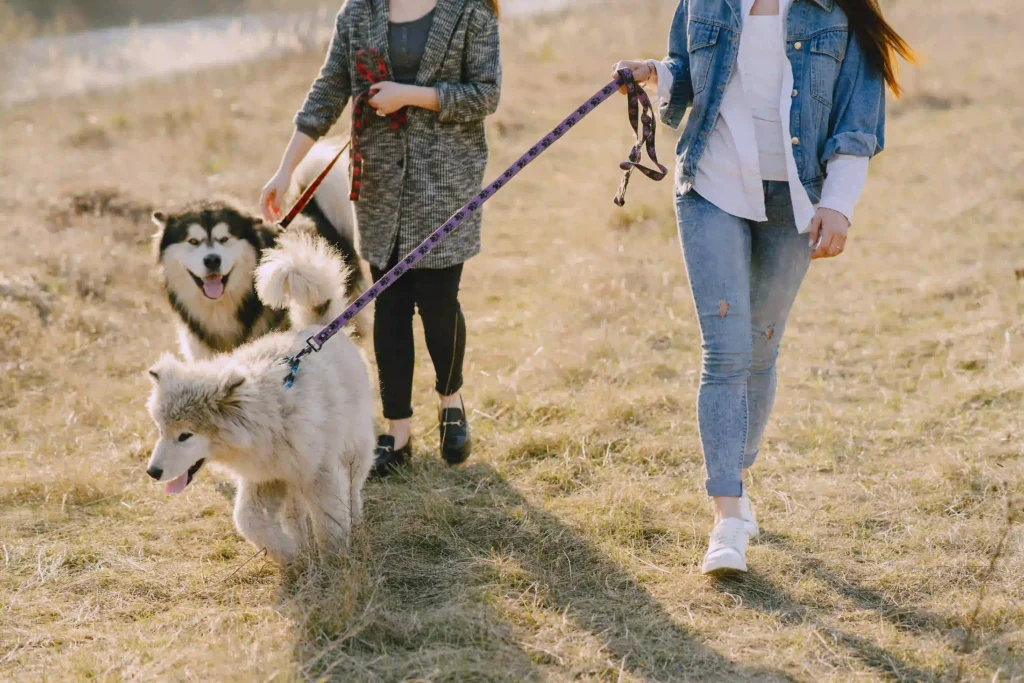
How to leash train an older dog
The best methods for training an older dog to wear a leash are provided below by the Purina experts. So, this helpful guide will show you how to leash train an older dog. Prepare yourself before you start! Along with plenty of your dog’s favorite treats, you’ll need your dog’s collar and short leashes. To dog leash, you must read these steps. Moreover, you can also talk to an expert dog trainer about how to dog leash. Or How to Train a Dog to Walk on a Leash. They will better guide you.
Step 1: Acclimate your dog to the leash and collar
Use a halter/harness or a non-tightening collar with a shorter leash.
Gently fasten the leashes to the harness or collar.
Your dog gets excited by your energy, so speak slowly and steadily
Step 2: Proceed calmly as a group.
Begin strolling peacefully together.
Be steady with your voice and movements.
Step 3: Lead your dog with gentleness
Treats in your hand should be used to encourage him to walk on the side you desire.
Simply remain motionless if he begins to tug; do not resist.
Step 4: Continue honing your skills
Take quick strolls to begin your training.
It could take your dog a month or longer to get the hang of it, so be patient.
Step 5: Congratulate your dog for good leash manners.
When he fulfills your request, show him lots of appreciation.
Reward him with treats when he stays by your side quietly and doesn’t tug.
Hence by using these steps, you will easily leash training your puppy.
how to train a puppy to walk on a leash without pulling
To train your dog to walk well on a leash without pulling you need to, follow these steps
1. To begin, remain motionless and silent. Give your dog access to the entire lead. When your dog is not paying attention to you, stay motionless and silent. However, the moment he does, give him some praise and a treat.
2. You can leave your dog once you’ve got their attention; while you’re out for a walk, use your voice and treats to entice your dog to stay near you. When your dog walks off a leash, always give them a treat.
3. If your dog starts to get too far away from you before the lead tightens, simply stop, remain motionless, and remain silent until they come closer to you. Reward and proceed once more. Each and every time your dog moves away, this needs to occur.
4. Practice this on a regular basis in brief sessions.
5. Dogs that are distracted while walking may pull. Put a toy or other object your dog would like to reach on the floor. Stop and call your dog toward you if they are pulling on the lead to get to the toy. They will reward themselves with the toy for walking on a loose lead. This teaches the dog that pulling causes things to move more slowly. And thus you will leash training your pup.
How to stop dog from pulling on leash?
Teaching your dog to walk calmly on a rope without pulling will take patience and practice, but it is doable. Anyone looking for ways to stop a dog from pulling on a leash has many options, and the best results are often achieved by combining multiple ideas.
Shifting your dog’s gears will require a concerted effort and a commitment to consistency, but it will be worthwhile when you can enjoy walking together with a slackrope.
Walking your dog on a leash training without being pulled requires patience and practice, but it is not impossible. Anyone looking for ways to stop a dog from pulling on a rope has many options, and the best results are often achieved by combining multiple ideas. To shift your dog’s gears, you’ll need to make a concerted effort and commit to being consistent.
But it will be worthwhile when you can enjoy walking together on a slackrope. You are not doomed to be pulled down the street as if you are waterskiing forever. Below are the steps we will tell you how to stop dog from pulling on leash?
1. Invest in power steering
Changing the equipment you use to walk your dog can significantly improve your experience right away. The right harness puts physics on your side, preventing your dog from leaning in with their entire body weight and dragging you along. Moreover, you can also use a good method such as Freedom No-Pull Harness by 2 Hounds Design.
Some people find bungee leashes useful because they have some give, but for strong, persistent pullers, we suggest that you prefer a plain nylon, rope, or leather leash.
2. Make the most of your own movements.
If dogs are allowed to continue moving forward, they will learn that pulling is the best way to get what they want and will continue to do so. Always recall never let your pulling dog go on their merry way. If your dog is pulling, you have two options these are as follows.
1. Stop quickly and do not move until your dog relaxes and the leash is slack. You may have to stop and repeat the process three seconds later, which is fine. Just be consistent in your refusal to let them pull.
2. When they pull, they turn and go in the opposite direction. This temporarily puts them behind you, and your pup will no longer be pulling.
Both of these training methods require some patience, Always recall these methods need more time but in the end, it will be worth it in the end.
3. Before going for a walk, exercise your dog.
You’re probably thinking, “Isn’t the point of the walk to give my dog some exercise?” Yes, and no. A dog walk offers more than just exercise. Dogs on walks also get to experience a new environment, which can be more stimulating than being at home. They can sniff and see other humans and dogs.
For the time being, the goal of the walk is to teach them how to walk properly so that they can go on future walks, rather than to meet all of their exercise needs at once. If your dog is tired when you first start out, they are less likely to pull.
This helps them develop good habits while also allowing you to reinforce their positive behavior in the future. Playing fetch in the yard, or even going up and down the stairs several times, can deplete their energy.
4. Teach your dog proper leash manners.
Whereas some dogs walk calmly and politely all their lives without being instructed, this is certainly not the norm. Most dogs must learn how to do it through loose leash training.
Consequently, how to train a dog to walk on a leash? Or how to teach a puppy to walk on a leash. Bring high-quality treats on every walk and reward your dog whenever they do the right thing, such as walking without pulling you. If you want them to walk beside you rather than in front, give them treats when they are in that position. To make an impression, the treats must be insanely delicious, which usually means soft and stinky. Most dogs will not do well with dry biscuits.

